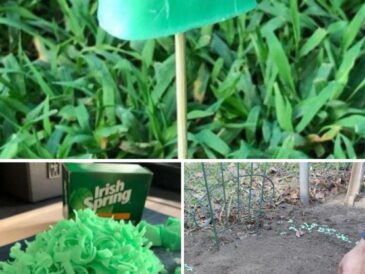If You Spot a Painted Purple Fence
You’re hiking through a wooded trail or driving along a country road when suddenly, you notice it: a purple fence post or a tree trunk painted with a purple stripe. Is it just a quirky choice of color? Is it part of someone’s outdoor decor?
Not at all.
In several U.S. states — and increasingly in other parts of the world — a purple-painted fence is a legally recognized warning. It carries the same weight as a “No Trespassing” sign and is backed by property laws with enforceable consequences. If you don’t know what it means, you could unintentionally end up on private land and risk fines or even legal action.
Let’s explore what purple fences really indicate, why they’re used, and how this small detail plays a big role in land ownership and home security.
🛑 What a Purple Fence Actually Means
A purple fence post or painted tree means “No Trespassing” — and in some states, it’s considered a legal boundary marker. Homeowners, farmers, and landowners use it as a low-cost, highly visible alternative to signs, especially in rural or wooded areas where signs may be damaged, stolen, or weathered.
This color code is part of specific property enforcement laws, especially in states like:
- Texas
- North Carolina
- Missouri
- Illinois
- Florida
- Arkansas
So, if you’re wandering outdoors and see a fence or tree marked with purple, it’s a clear signal to turn back immediately — whether or not you see a posted sign.
🔐 Why Use Purple Paint Instead of Signs?
Here’s why many landowners prefer the purple paint system:
✅ 1. It’s Durable and Low-Maintenance
Signs can fall, fade, or get vandalized. Paint lasts for years and withstands harsh weather conditions, making it a cost-effective property protection strategy.
✅ 2. It’s Legal and Enforceable
In many states, painted boundaries are written into trespassing laws, meaning that crossing one can result in criminal charges or fines — just like crossing a fence with a posted sign.
✅ 3. It Helps in Remote Areas
In large plots of land like farms or forested lots, paint is easier to apply at intervals across trees and fences, offering a visible warning to hunters, hikers, or passersby.
If you’re buying rural property, this is an essential land boundary enforcement tool to keep in mind.
📜 Understanding the Law: Purple Paint Statutes
These laws are part of state property codes and vary slightly in requirements. Most laws state that:
- Paint stripes must be a specific height (e.g., between 3 and 5 feet off the ground)
- They must be clearly visible from a distance (e.g., every 100 feet)
- The color must be “purple paint,” not just any shade
Violating a purple-painted boundary can lead to trespassing fines, criminal citations, and in some cases, arrest — especially if weapons or hunting gear are involved.
For anyone involved in real estate, property management, or rural development, knowing this law is vital to avoiding legal disputes and ensuring clear communication of land rights.
🏠 Why It Matters for Homeowners and Landowners
If you own land, especially rural acreage or vacant lots, marking your property boundaries with purple paint could save you legal headaches and reinforce your home security.
It’s particularly useful if:
- You want a sign-free aesthetic
- You deal with frequent trespassers or hunters
- You live in a state with legal recognition of purple paint
The next time you contact fence painting services or make decisions about property boundary markers, consider this smart, affordable method.
⚖️ Legal Consequences of Ignoring Purple Paint
Wandering past a purple fence may seem innocent, but it can lead to:
- Trespassing citations
- Fines ranging from $250 to over $1,000
- Criminal records for repeat offenders
Some landowners also install security cameras or motion-activated lights alongside purple paint as part of a comprehensive security system, further protecting their land from unauthorized entry.
🧱 Purple Paint vs. Traditional “No Trespassing” Signs
| Feature | Purple Paint | Traditional Signs |
|---|---|---|
| Cost | Low | Medium to High |
| Durability | High (weatherproof) | Medium (can fade or fall) |
| Legal Validity | Yes (in some states) | Yes |
| Visibility | Moderate to High | High |
When combined with fencing, security systems, or surveillance technology, purple paint creates a multi-layered deterrent — essential in today’s world of property protection solutions.
🌳 What to Do If You See One
If you see a purple-painted fence or tree, don’t cross it. Assume the area is private property, and proceed only if you have written permission from the owner. This is not just about etiquette — it’s about staying on the right side of local trespassing laws.
Whether you’re a camper, hiker, delivery driver, or land buyer, recognizing these markers is part of responsible land use awareness.
✅ Conclusion: Purple Isn’t Just a Color — It’s a Warning
The next time you spot a purple fence, understand it’s not a fashion choice — it’s a legal signal to stay away. From home security strategies to rural property management, this simple stroke of paint plays a major role in protecting landowners’ rights and keeping people safe.
So if you’re planning to buy land, invest in rural property, or simply enjoy outdoor activities, it pays to know what these visual cues really mean.





